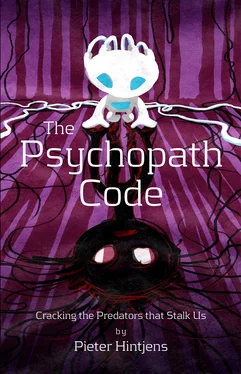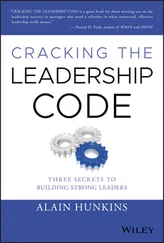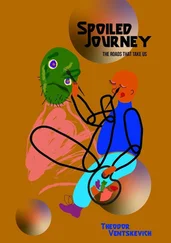It gets worse.
The Feeding doesn’t last forever. After a while — it could be a few days, or many years — Mallory decides to move on. To be more accurate, she starts to act on plans she’s been making from the start. Bob is close to empty. Or, a fantastic opportunity has opened up. Or, Bob is threatening to explode and expose the whole scheme.
So her next phase is a demolition job I call the Wrecking. It is a classic part of Mallory’s relationships, and yet puzzling. She doesn’t work from revenge, nor vindictiveness. She is too lazy to take time and effort to hurt people unless there is a pragmatic reason. It has to be profitable.
The Wrecking can be hard to see. It happens in private for the most part. It is often subtle and insidious. The obvious symptom is long term depression and trauma in Bob and Alice. Years after Mallory is gone, they still hate to talk about their experiences. They feel long-lasting shame, guilt, and self-pity. Anything that reminds them of their experience triggers flashes of fear, anger, and pain.
Brenda Myers-Powell, in her article "My 25 years as a prostitute" [57] http://www.bbc.com/news/magazine-33113238
, wrote: "I can tell as soon as I meet a girl if she is in danger, but there is no fixed pattern. You might have one girl who’s quiet and introverted and doesn’t make eye contact. Then there might be another who’s loud and obnoxious and always getting in trouble. They’re both suffering abuse at home but they’re dealing with it in different ways - the only thing they have in common is that they are not going to talk about it."
During the Wrecking, Mallory only has two masks for Bob. One is neglect and absence. The other is aggressive anger. There are no rewards, only silence or punishments. And during this, she tells him over and over, "this is your fault, you are worthless." And she reminds him how he has ruined her life, how she will make him pay. "No matter where you go," she says, "I will find you and hurt you."
Bob becomes dysfunctional, gaunt, violent, and defensive. If anyone sees the couple, Bob looks hostile and unstable. Mallory looks comfortable, easy, delicate. It is clear to observers who the victim is, if any.
This wrecking brings no direct profit to Mallory. A dysfunctional Bob is worth nothing to her. This is the mysterious part. Mallory needs to feed, and yet she spends effort making Bob useless. We can see the answer in Bob’s long-term PTSD.
Mallory has strong incentives to keep Bob from telling people about his experiences. Mallory needs to keep her cover, or she cannot hunt. An ex-victim who talks is dangerous. This is how cults like Scientology fall. Ex-members tell stories of the insanity and criminality, and public support turns to hate. Likewise, firms have collapsed due to ex-employees exposing corruption and criminality. Governments have fallen the same way. As for serial abusers, it is the silence of their victims that lets them continue.
Serial Killer vs. Psychopath
The man sits next to him, unwraps a package, and offers him a piece of bread with sausage. "Here, take some, you’re hungry," says the man. He takes a piece then nibbles at it. It’s the first food he’s had in days, since he left. He can hardly swallow, his mouth is so dry. The man offers him a canteen. "Drink" he says. It’s water. He drinks and hands back the metal bottle, then finishes the rest of the bread.
"Where you from?" says the man. "Gukovo," he mumbles. "Runaway, eh? What are you, thirteen, fourteen?" says the man, and gives him another chunk of bread and sausage. He nods, says nothing, and eats. The man reaches into his pocket and takes out his wallet. He opens it, pulls out some notes. "Take this, you’ll need it," says the man. He hesitates. Why is this stranger helping him?
"My uncle was from Zverevo." says the man, nodding, as if he can read his mind. "Horrid little town, nothing but the mines. Just like Gukovo. You’re going to a better place. Here, take this." The man hands him the money again. So he takes it, folds it, puts it into his shoe. "Come," says the man, "I will show you something important." The man gets up, stands in front of him. He’s dressed like a factory worker, heavy trousers, heavy shoes, shirt, jacket. He is carrying a black bag. His face shows nothing except an easy smile. It’s a face you can trust.
The young boy shrugs and gets up. He follows the man out of the waiting room, deserted for hours. They walk out of the station yard and cross the single track into the autumn woods. He wonders where the man is taking him. They get deeper into the woods, well out of sight of the station. The man opens the bag he is carrying and takes out a length of rope.
"I will tie your hands behind your back now," he tells the boy.
The boy complies. It seems inevitable.
With all this talk of violence, let’s talk about serial killers. Popular culture has often portrayed psychopaths as serial killers. Serial killers are of course real, yet rare. The FBI estimates 35-50 active in the USA at any time. There are roughly 8 million psychopaths running around. That is 4% of Americans above 18 and under 65.
So the chance that any given adult American is a psychopath is 1 in 25. Whereas the chance that any given psychopath is a serial killer is 1 in 200,000. The statement "all Americans are psychopaths" has a 96% error margin. The statement "all psychopaths are serial killers" has a 99.9995% error margin, by contrast.
Can we agree at least that all serial killers are psychopaths? If you ask forensic psychologists and psychiatrists, there is no general consensus [58] https://www.google.be/webhp?sourceid=chrome-instant&ion=1&espv=2&ie=UTF-8#q=are%20all%20serial%20killers%20psychopaths
.
Some argue that most serial killers act like psychopaths. They are aware of the law yet they disregard it. They have no empathy for their victims. They are predatory, to an extreme degree. They tend to be charming, manipulative, and narcissistic. They often hide in plain sight, fooling friends and family for years. They invent rich cover stories. They lie so well that even coming home covered in blood, their wives suspect nothing [59] http://listverse.com/2013/03/19/10-baffling-wives-of-serial-killers/
.
The list of psychopath traits that serial killers exhibit goes on. They show no remorse, and blame their victims. They are rarely alcoholics or drug users. Above all, they treat others like disposables, to use and destroy for personal gain.
Nonetheless, when psychiatrists diagnose serial killers, they often come up with other personality disorders. The typical diagnoses for serial killers are borderline, narcissistic, and schizoid personality disorders.
And others argue that serial killers do not act like psychopaths. Most psychopaths murder no-one. And when they do, it is for pragmatic reasons: for money, for power, or to escape capture. Most serial killers are men. 50% of psychopaths are female.
They look like different animals, and I struggle to find a model that works. Mallory, for all the pain he causes, plays a role. Predators shape their prey species. Psychopaths have been key to social human development, as I explained in Predator . Yet serial killers?
The 2015 movie Jurassic World turns around this question. In the movie the genetic engineers grow an Indomitus Rex out of mystery genes. The angry hybrid animal escapes and goes on the rampage. It slaughters people and other dinosaurs. Owen (played by Chris Pratt) says the animal knows nothing of the outside world. "Now it’s killing for sport," he tells us.
In the end (spoiler alert!) it is the other predator dinosaurs that defeat the monster. The velociraptors and T-Rex that bring down the Indomitus Rex are just as dangerous. Yet they are part of a system, and in the end they defend that system against the threat.
Читать дальше












